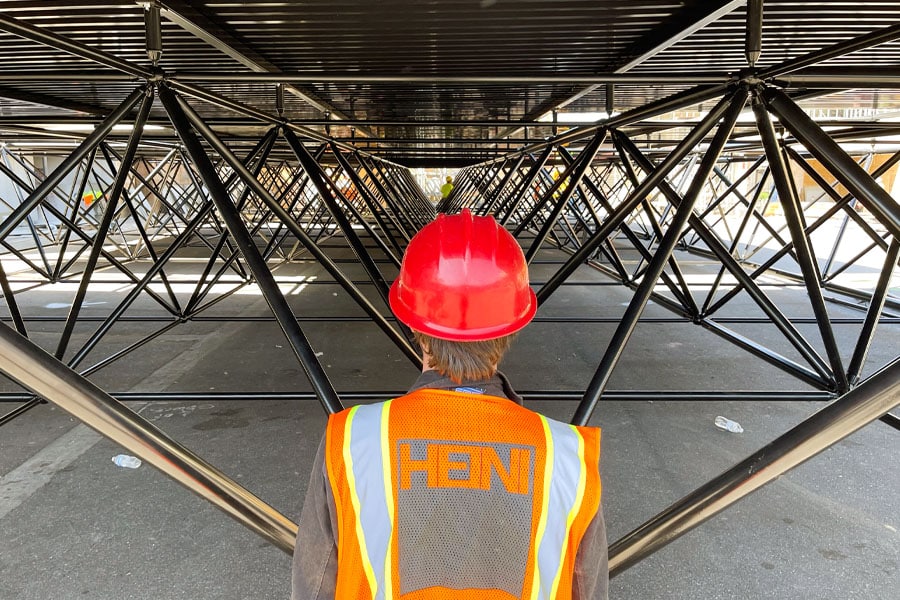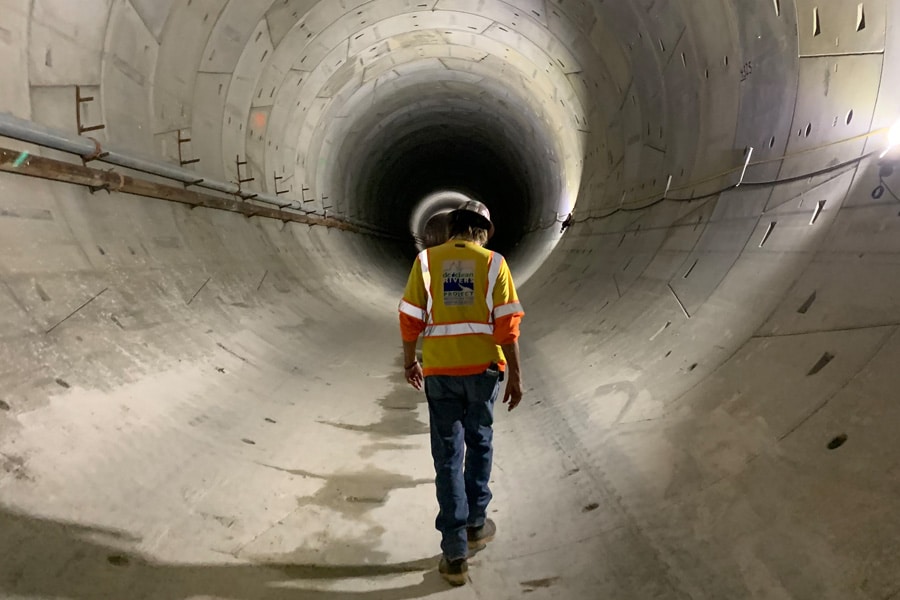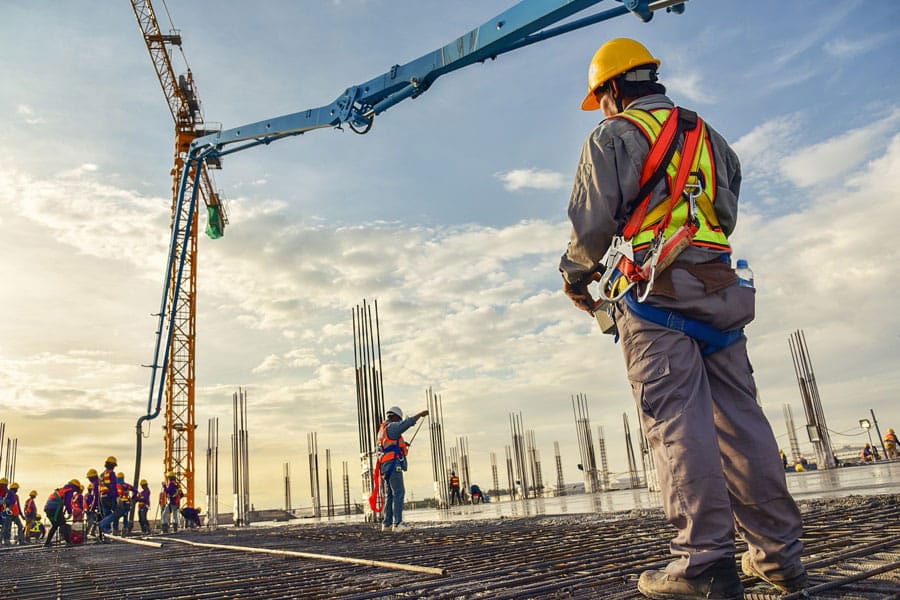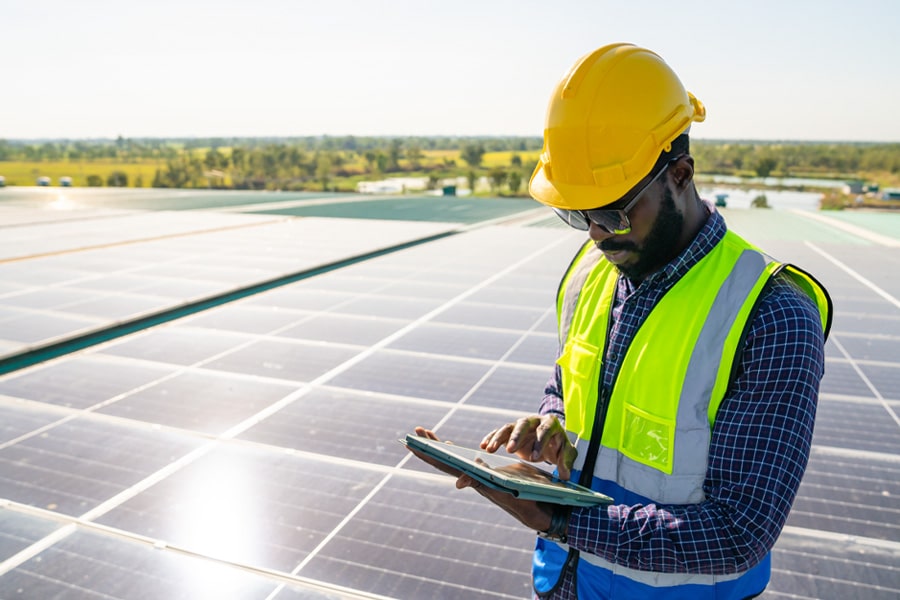When most in construction build a new building, it’s reasonable to anticipate that a project will take years—if not decades—to complete, and that the structure will stand for even longer.
But for Justin Smith, founder and principal of HEINI Construction, the building process happens on an accelerated schedule. Going up in a matter of weeks, the complex structures that HEINI builds are designed to be built as quickly, efficiently and effectively as possible—and come down just as quickly when the need for them has passed.
Built spoke to Smith about the wild world of temporary construction and what the conventional architecture, engineering and construction (AEC) industry can learn from his experiences on the job.
What makes a structure temporary?
What exactly defines a temporary structure? For Smith, it’s about lifespan. “Temporary construction is just about stuff that has a lifespan,” he said. “It’s usually for an event or for a temporary installation. An event’s going to be three days, two weeks, one month. A temporary installation can be a couple months to multiple years ongoing.”
When a temporary structure needs to stand for longer, they’re updated and modified occasionally for safety. “These installations just get modified every year in some way or another, get re-permitted as that process goes on, and they just stay up as temporary installations,” Smith said.
Even these structures with a longer lifespan are built using temporary construction techniques, which allow them to be redesigned and dismantled as quickly and efficiently as possible when the need strikes. “The structure behind the walls is built out of scaffolding and steel beams between scaffolding structures, and it’s all ballasted above grade,” Smith said.
ALSO ON BUILT:
Using these unconventional techniques allows Smith and the HEINI team to build quickly and make decisions on a dime. “We just kind of move around problems that would hamstring a permanent construction project,” Smith said. “They have the standard mindset, the standard toolkit to approach everything, including the same standard liabilities and legal protections. The AEC industry in general—from architect to engineer to contractor and owner—you’re always protecting the liabilities of everyone involved in a way that really slows down the process.”
Building on a tighter timeline
Smith said the key differentiator for temporary construction is the ability to build quickly while still creating up-to-code structures that can get the job done.
“We’re an integrated provider that’s competing against time,” he said. “That creates constraints that force us to be more ingenious and more flexible. We don’t ever want to sacrifice the final look and feel of the space, so it’s doubly hard to try to find solutions, but that’s kind of what makes it fun.”
So how is the HEINI team able to build so quickly? Precision is key. “Doing a survey, and sometimes multiple surveys, is extremely important for us,” he said. “Most of what we do is going to be prefabricated off site to some degree, so it has to be very accurately measured.”
“For instance, for one project we covered all the open spaces with elaborate German-engineered, Chinese-fabricated structures that were completely custom-made to fit in all the different crannies,” Smith continued. “We had to measure that in advance multiple times, because it was getting produced in China then shipped out, and all in a super short timeframe. There’s no time to have it not fit. Depending on how long customs was going to be, it was already time-critical, and we couldn’t have anything go wrong to make it happen.”
Unlike conventional construction, which works on an extremely long and future-oriented timeline, the HEINI team is working on an accelerated schedule counted in weeks or even days, not months and years. “Eight weeks can be a $2.5 million project for us,” Smith said.
A focus on deconstruction
HEINI’s speed and efficiency all point to a shared focus on the end of the process—what happens not only once the structure is built, but how and when it will come down.
Although the team also does conventional stick-and-build-based projects, in general Smith said HEINI tries to make structures as easy to disassemble as they are to build.
“We do try to deconstruct in general as much as we can and reuse everything,” he said. “That’s what we think is really interesting in part about temporary structures is that there is this pressure to take things up and down, reuse the materials. So even when we stick-frame something, we’ll try to reuse it.”
This emphasis on the whole lifecycle of a structure has a major impact on the way Smith and the HEINI team envision the design-build process.
“It just really changes what you’re looking at and why you’re looking at it,” he said. “Because usually the constraints for a construction project are going to be about what the code allows you to do, along with architectural considerations. Do we want to use bolts or do we want to use welding? But for us it’s always going to be a demountable solution, so there’s some sort of mechanical connection that allows you to take it apart and do it over again. There are other connections we use that are just not thought of in the permanent world because there’s not a need for speed.”
When asked what the conventional construction world could learn from temporary construction, Smith said this cyclical, systems-based approach is essential.
“I think that over time what’s going to happen is that architecture is going to become a systems solution,” he theorized. “If you want a home, you’re going to buy an architectural system that’s got predefined all of the ways it can be built, and inserted into that process is going to be a conversation about speed—how fast it can be built for what kind of a cost it can be built for. And if you design that system once and it’s flexible, it can be repurposed in different ways, then you don’t need to hire an architect to do a new building every time.”
With prefabrication, offsite components manufacturing and other aspects of temporary construction joining the vocabulary of the mainstream industry, Smith’s version may be closer than we think. And until that day comes, HEINI will keep building fast, efficient structures that get the job done.
















